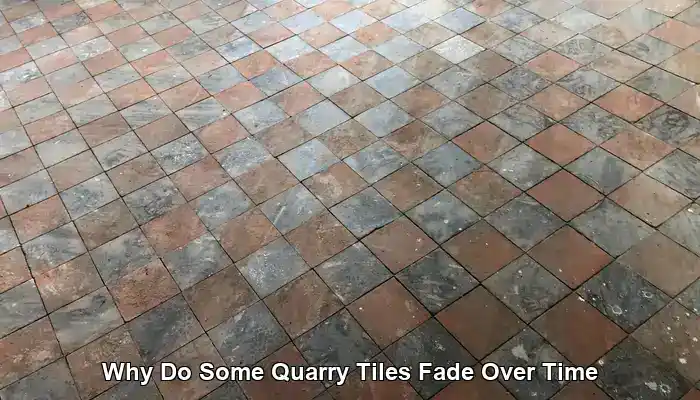
Quarry tiles have long been celebrated for their exceptional durability, earthy charm, and timeless appeal. These robust, unglazed ceramic tiles are ideal for various settings, whether enhancing a rustic kitchen floor or providing a solid foundation for a sunlit patio. However, despite their reputation for strength, many homeowners and property managers find themselves confused when they observe a gradual fading of colour over time. This fading can vary in intensity, presenting as subtle changes or dramatic shifts, leaving tiles that once gleamed in vibrant reds, warm browns, or rich terracotta hues looking pale, patchy, or lifeless.
The gradual fading of quarry tiles should not be dismissed as a mere aesthetic issue; it often indicates deeper problems related to wear, environmental pressures, or chemical deterioration. Outdoors, these tiles are continually subjected to the harsh realities of weather—rain, frost, and fluctuating temperatures that can erode their surfaces over time. The freeze-thaw cycle can introduce micro-cracks and surface spalling, revealing lighter inner layers that may have a coarser texture. Conversely, indoor environments present their own unique challenges. High foot traffic can gradually wear down the tile’s pigmented surface layer, exposing the inner body that may feature larger particles and a variety of mineral colours. This natural stratification means that once the surface integrity is compromised, noticeable changes in colour and texture occur, leading to an unattractive appearance.
Beyond physical wear, chemical exposure plays a significant role in the fading process. Harsh cleaning agents, particularly those that are either acidic or alkaline, can damage sealers and strip away protective coatings. Over time, this degradation makes the tiles more susceptible to staining, efflorescence (the formation of salt deposits that can lighten the surface), and the accumulation of dirt in the newly created pits and abrasions. All these factors contribute to a faded, uneven appearance that detracts from the original beauty and structural integrity of the tiles.
To effectively maintain the character and longevity of quarry tiles, it is essential to understand the underlying causes of fading. In this comprehensive guide, we will delve into the environmental, mechanical, and chemical factors that lead to fading—both indoors and outdoors—and offer practical tips on prevention and restoration. Whether you are caring for a historic floor or seeking to preserve the aesthetic appeal of your tiles, this resource will equip you with the knowledge needed to grasp the intricate dynamics behind the wear of quarry tiles.
Expert Recommendation: Discover Our Top Products for Daily Maintenance and Cleaning of Quarry Tiles
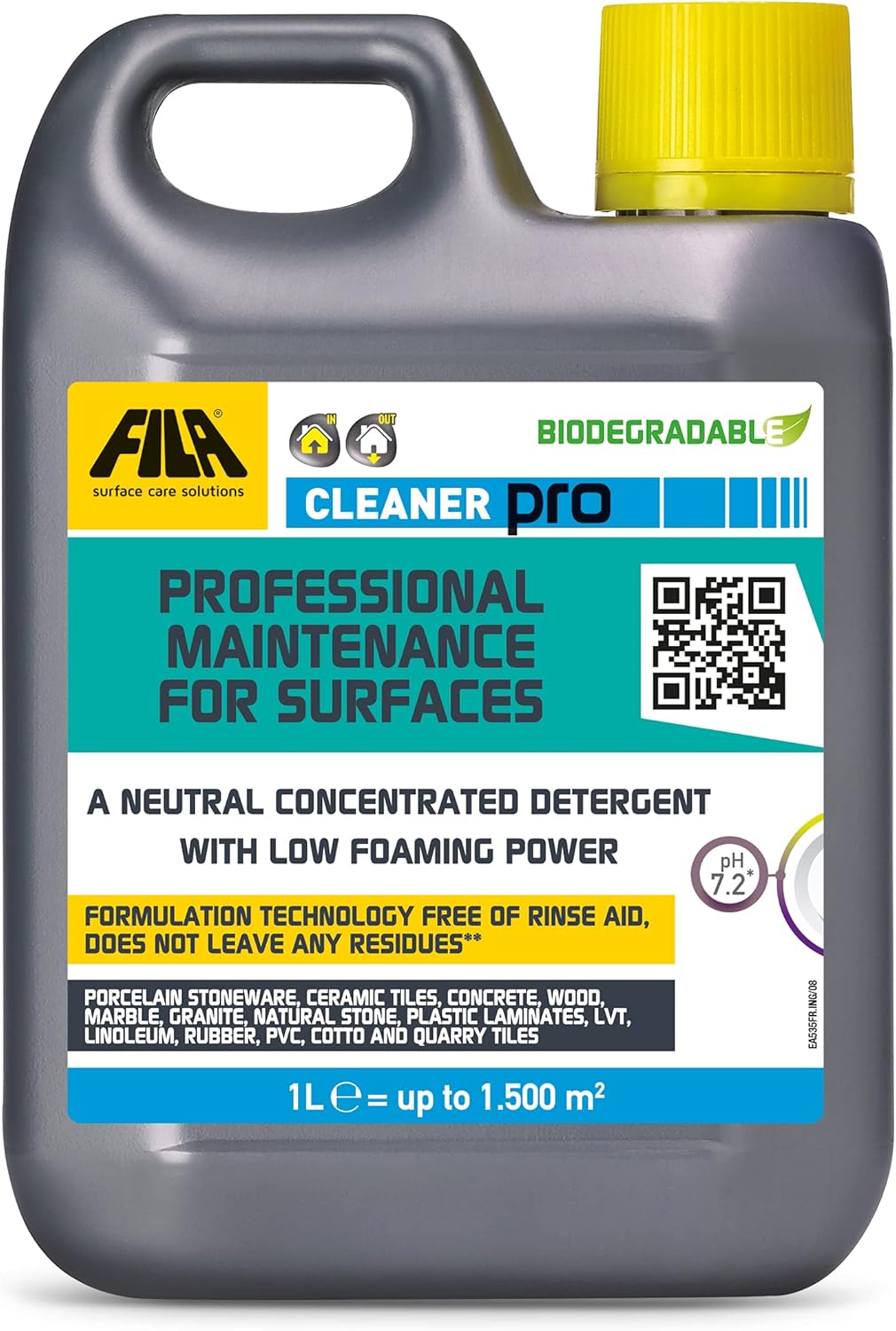
Fila Pro Floor Cleaner
|
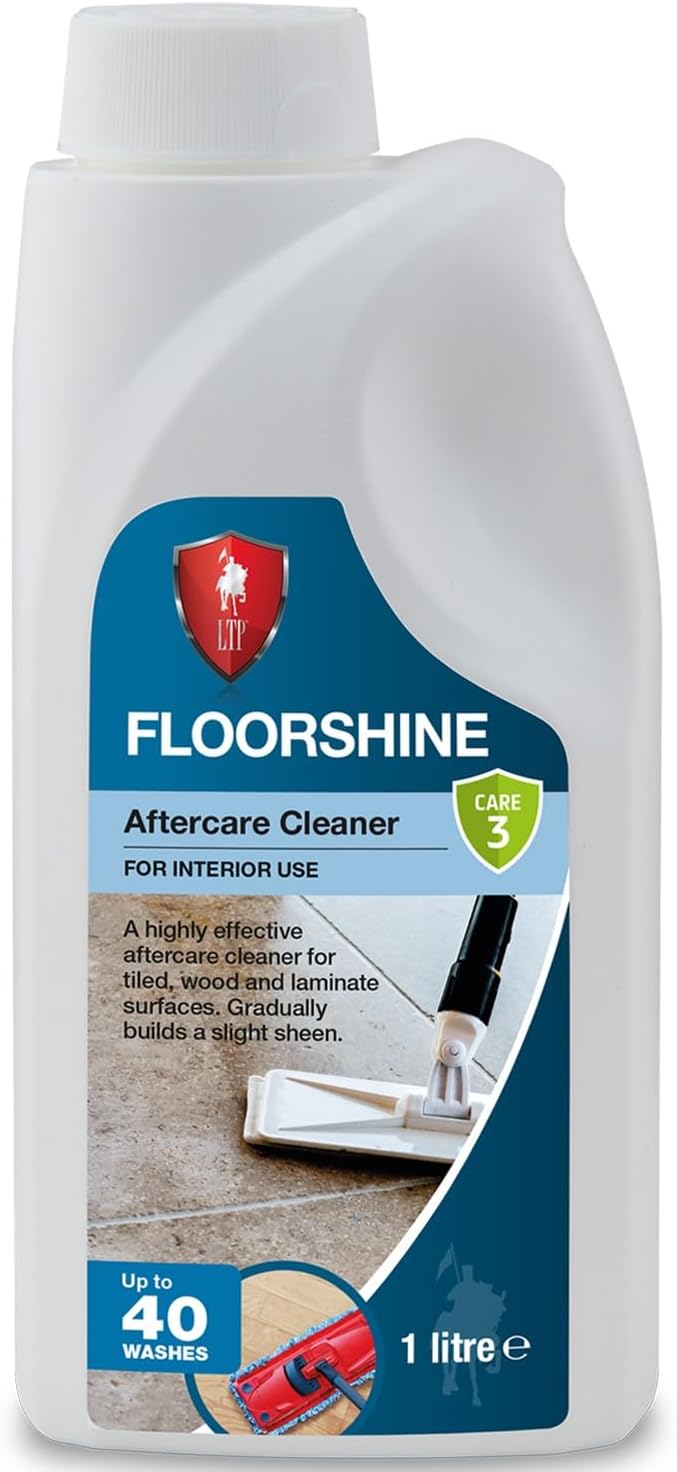
LTP Floorshine
|
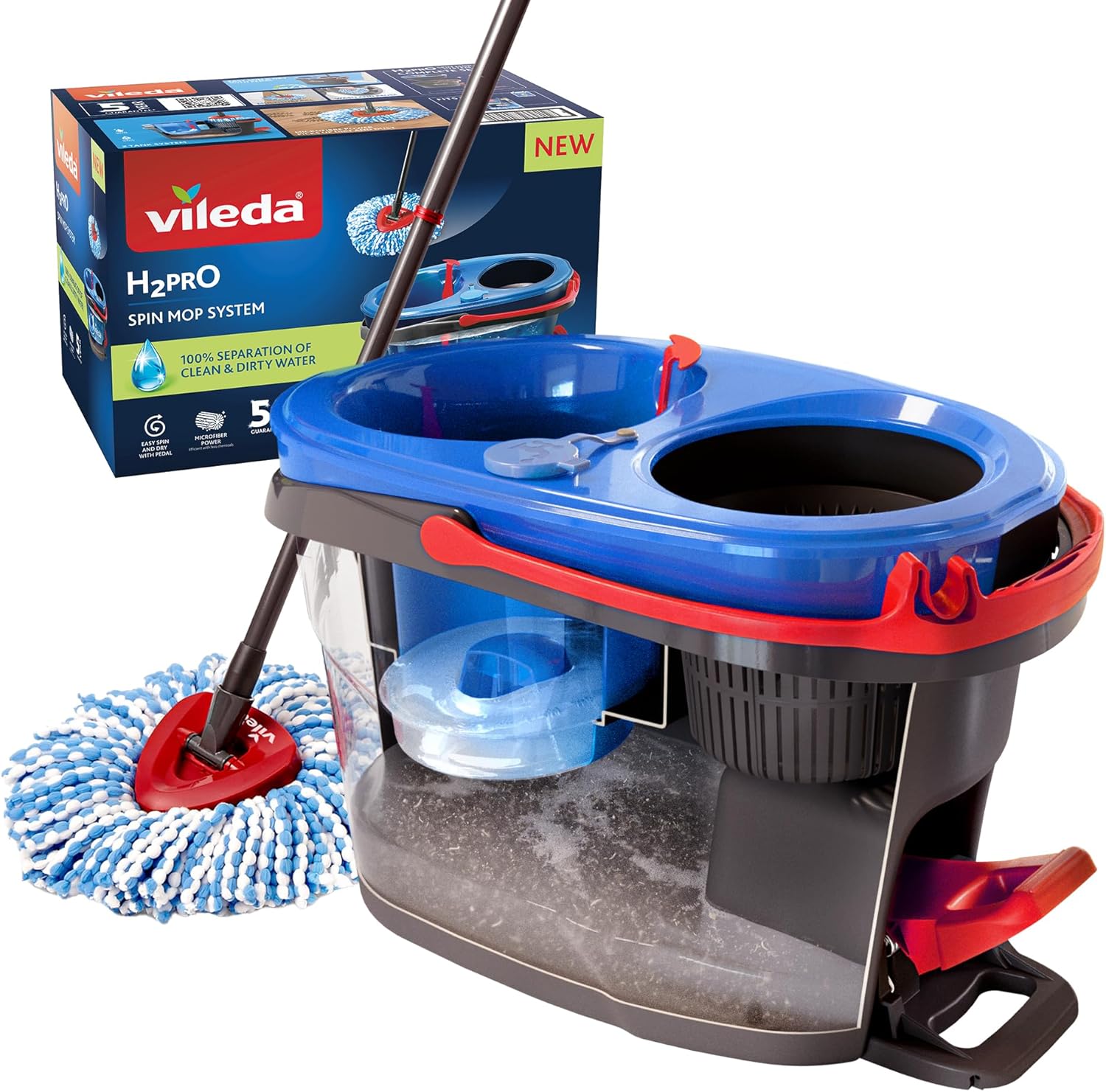
Vileda H2PrO Spin Mop System
|
Understanding the Outdoor Factors That Contribute to the Fading of Quarry Tiles
Outdoor quarry tiles face a relentless barrage of environmental stressors that gradually erode their colour and texture. Although these tiles are renowned for their resilience, the unyielding forces of nature can diminish even the most robust surfaces over time, resulting in a dull, lifeless appearance.
The Impact of Weather on Quarry Tile Colouration
Weather is a fundamental factor that significantly contributes to fading, particularly through the effects of rain and freeze-thaw cycles. Rainwater can infiltrate the porous surface of unsealed or inadequately sealed tiles, transporting minerals and contaminants that can stain or leach the colour from the tile. When temperatures drop, moisture trapped within the tile expands as it freezes, leading to micro-cracks and surface flaking. This repetitive freeze-thaw process exposes the tile's inner body, which often contains lighter, less pigmented materials, resulting in a noticeable reduction in vibrancy.
Understanding Surface Wear and Layer Exposure in Quarry Tiles
Typically, quarry tiles are constructed with a dense outer crust that houses the most vibrant colour. As this outer layer wears away due to foot traffic, abrasion, or environmental erosion, the inner layer becomes increasingly visible. This inner section usually features rougher textures, larger aggregate particles, and a lighter, more uneven hue. Consequently, the result is a patchy appearance that lacks the richness and depth of the original surface, significantly detracting from the overall aesthetic appeal.
The Role of Chemical Damage in Quarry Tile Fading
Cleaning outdoor tiles often necessitates the use of powerful chemicals to combat moss, algae, or grime. Unfortunately, these potent solutions can compromise sealers and strip away protective coatings. When the sealer is damaged, the tile becomes more vulnerable to staining, mineral deposits, and accelerated wear. Over time, this chemical exposure significantly contributes to fading and surface dullness, ultimately diminishing the exterior's aesthetic appeal.
Exploring the Indoor Factors That Lead to Quarry Tile Fading
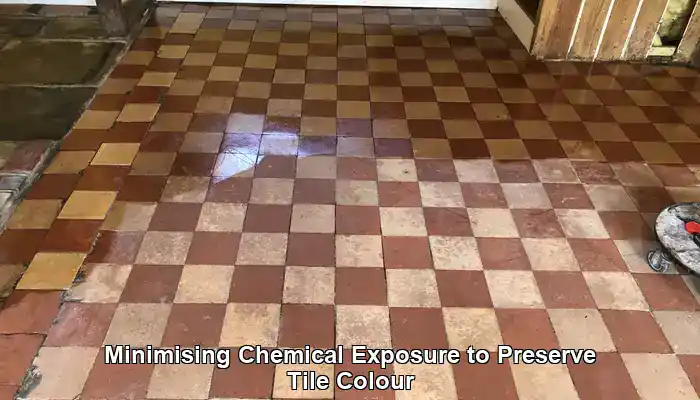
While outdoor quarry tiles grapple with natural elements, indoor tiles encounter a distinct set of challenges that can be equally damaging over time. From constant foot traffic to regular cleaning routines, the fading of indoor quarry tiles often results from a slow, cumulative process driven by wear, surface deterioration, and chemical exposure.
Dealing with Abrasive Wear and Crust Loss in Indoor Quarry Tiles
Quarry tiles are designed with a dense, pigmented outer crust that provides their vibrant colour and smooth finish. Indoors, particularly in high-traffic areas such as kitchens, hallways, and commercial settings, this crust gradually erodes. As the surface wears down, the inner body of the tile becomes exposed, which typically contains larger mineral particles and features a more porous structure, leading to a noticeable shift in both colour and texture. Earth-toned tiles may begin to appear mottled or washed out, with lighter patches where the crust has thinned.
Addressing Surface Pitting and Soil Accumulation in Quarry Tiles
As the surface deteriorates, micro-abrasions and pits begin to develop. These tiny indentations can trap soil, grease, and residues left behind from cleaning. Over time, the buildup of grime in these pits results in uneven staining and dullness. Even regular cleaning may not fully eradicate embedded dirt, leading to a faded, blotchy appearance. This issue is particularly common in older floors that have not received appropriate sealing or maintenance, highlighting the necessity for regular upkeep.
Understanding Efflorescence and Mineral Migration in Quarry Tiles
Efflorescence is a critical phenomenon that contributes to indoor tile fading. This occurs when moisture beneath the tile rises to the surface, bringing soluble salts along with it. As the water evaporates, it leaves behind a white, powdery residue that lightens the tile’s appearance and can inflict surface damage. Efflorescence is particularly prevalent in areas with poor subfloor ventilation or where tiles are installed over damp concrete. If not addressed promptly, it can harm the tile's surface and complicate cleaning efforts.
The Impact of Chemical Overuse and Sealer Breakdown on Quarry Tiles
Indoor cleaning routines often involve potent chemical agents, especially in commercial kitchens or food preparation areas. While these products may be effective in removing grease and stains, they can also strip away sealers and protective layers. Once the sealer is compromised, the tile becomes more porous and prone to staining, wear, and further fading. Acidic or alkaline cleaners can even etch the surface, permanently altering its texture and colour. Over time, repeated exposure to harsh chemicals accelerates the degradation of both the tile and its finish, exacerbating fading.
Essential Maintenance Practices to Preserve Quarry Tile Colour
The fading of indoor quarry tiles can often be prevented with diligent care. By using pH-neutral cleaners, following a consistent sealing schedule, and avoiding abrasive scrubbers, you can significantly enhance the longevity and appearance of the tiles. For older floors that show signs of wear, seeking professional restoration services—including deep cleaning, re-sealing, and colour enhancement—can help rejuvenate their original beauty and restore vibrancy.
Effective Prevention and Restoration Tips for Quarry Tiles
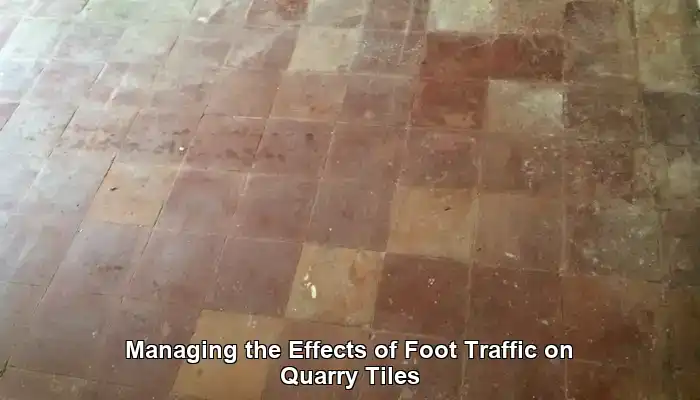
Understanding the reasons why quarry tiles fade is just the starting point—the true value lies in knowing how to prevent this fading and restore the original beauty when wear inevitably occurs. Regardless of whether your tiles are situated indoors or outdoors, proactive care and targeted restoration efforts can significantly extend their lifespan and preserve their rich, earthy character.
Sealing as the Primary Defence Against Fading
One of the most effective strategies for preventing fading is through proper sealing. Quarry tiles are naturally porous, and without a protective barrier, they readily absorb moisture, dirt, and chemicals. A high-quality penetrating sealer fills these pores without forming a surface film, allowing the tile to breathe while repelling contaminants. This is especially crucial for outdoor tiles to guard against rain, frost, and algae growth. For indoor tiles, sealing helps to resist stains from spills, cleaning products, and foot traffic.
Sealers should be reapplied periodically—typically every 1 to 3 years, depending on usage and exposure. A simple water-drop test can help determine when resealing is necessary: if water soaks into the surface instead of beading, it’s time for a refresh to maintain optimal protection.
Smart Cleaning: Avoiding Harsh Chemicals for Quarry Tiles
Regular cleaning is vital, but the choice of products is equally important. Harsh chemicals, particularly those that are acidic or alkaline, can damage sealers and etch the tile surface over time. This degradation results in dullness, colour discolouration, and increased susceptibility to staining. Instead, opt for pH-neutral cleaners specifically formulated for stone or tile surfaces. These products effectively lift dirt without compromising the tile’s structural integrity.
For stubborn grime or efflorescence, use targeted treatments sparingly and always follow up with a thorough rinse. Avoid using bleach, ammonia, and vinegar-based solutions, which may seem effective but can lead to long-term damage.
Maintenance Techniques to Preserve the Colour of Quarry Tiles
Regular sweeping and damp mopping are essential for preventing soil buildup and surface abrasion. Use soft-bristle brushes or microfiber pads rather than abrasive scrubbers, which can wear down the tile’s pigmented crust. In high-traffic areas, consider placing rugs or mats to mitigate direct wear—especially near entryways or kitchen workstations, where foot traffic is typically heaviest.
For outdoor tiles, pressure washing should be approached with caution. Although it can effectively eliminate surface dirt, excessive pressure may erode the tile or force water into cracks, potentially accelerating freeze-thaw damage. If used, maintain low pressure and ensure the nozzle is kept at a safe distance to protect the integrity of the tiles.
Professional Restoration: Revitalising Faded Tiles
When fading becomes apparent and routine maintenance fails to suffice, professional restoration can deliver impressive results. Restoration specialists utilise a combination of deep cleaning, mechanical resurfacing, and colour enhancement techniques to rejuvenate tired tiles.
- Deep cleaning effectively removes embedded dirt, grease, and mineral deposits using specialised equipment and solutions tailored for tile care.
- Mechanical honing or polishing smooths worn surfaces and restores texture, especially on indoor tiles exhibiting surface pitting.
- Colour enhancement sealers can deepen faded tones, particularly in earth-toned tiles, enriching the natural pigments without creating a glossy finish that may detract from their appeal.
In cases of severe wear, restoration may also involve regrouting, tile replacement, or applying protective coatings tailored to the specific environment of the tiles.
Implementing a Long-Term Care Strategy for Quarry Tiles
To prevent future fading, a long-term approach is essential. Establish a maintenance schedule that includes regular inspections, cleaning, and resealing. Educate household members or staff about proper cleaning techniques and the importance of using suitable products. For commercial environments, consider collaborating with a floor care professional to develop a tailored plan that addresses traffic levels and environmental factors.
If your tiles are part of a heritage property or have historical significance, consult with conservation experts before undertaking any restoration efforts. Preserving the authenticity of older quarry tiles often requires specialised techniques and materials to ensure their historical integrity remains intact.
Final Thoughts on Quarry Tile Maintenance and Care
Quarry tiles are renowned for their rugged beauty and enduring charm, yet even the most durable materials are not immune to the effects of time. Whether subjected to harsh outdoor elements or the relentless wear of indoor foot traffic, fading is a natural outcome of environmental stress, mechanical abrasion, and chemical exposure. From the erosion of the tile’s pigmented crust to the subtle effects of efflorescence and surface pitting, each factor contributes to diminishing the original vibrancy of the tiles.
Fortunately, fading does not have to be a permanent state. With the right knowledge and care—regular sealing, gentle cleaning, and professional restoration when necessary—quarry tiles can retain their colour and character for decades. Understanding the causes of fading empowers homeowners, property managers, and restoration specialists to implement proactive measures that preserve the aesthetic and structural integrity of these timeless surfaces.
Whether your tiles are part of a historic property or a contemporary installation, their longevity hinges on how well they are maintained. By respecting the material and addressing its needs, you ensure that your quarry tiles continue to share their story—rich in colour, texture, and history—for many years to come.
Frequently Asked Questions About Quarry Tile Care and Maintenance
Can faded quarry tiles be restored effectively?
Yes, quarry tiles can often be revitalised through deep cleaning, resealing, or even professional refinishing techniques, depending on the extent of the fading. Homeowners should explore their options for rejuvenating the beauty of their tiles.
What is the recommended frequency for cleaning quarry tiles?
Regular sweeping should be conducted weekly, with deeper cleaning every few months to uphold their appearance and prevent fading. Establishing a consistent routine will help protect the vibrancy of the tiles.
Are there specific sealants designed for quarry tiles?
Indeed, there are specialised sealants formulated specifically for quarry tiles that provide protection against moisture and UV rays, enhancing their longevity and aesthetic. Homeowners should consult professionals for recommendations on the best products.
Which cleaning products should be avoided on quarry tiles?
Avoid using acidic cleaners, harsh chemicals, and abrasive scrubbers, as these can damage the surface and contribute to fading. Instead, opt for gentle, tile-safe products that will not compromise the integrity of the tiles.
How can I tell if my quarry tiles need resealing?
If water no longer beads on the surface or if the tiles appear dull and stained, it may be time to reseal. Regular checks can help ensure optimal protection and appearance.
Does indoor lighting affect the fading of tiles?
Indirect indoor lighting generally has less impact than UV rays, but prolonged exposure to bright light can contribute to gradual fading. Homeowners should consider lighting options when designing their spaces to mitigate this effect.
Can I use a steam cleaner on quarry tiles?
Steam cleaners can be too harsh for quarry tiles, potentially damaging their surface. It’s advisable to adhere to recommended cleaning methods to maintain their integrity and longevity.
Are some quarry tiles more prone to fading than others?
Yes, tiles made from lower-quality materials or pigments may fade more quickly compared to those crafted from superior materials. Homeowners should prioritise quality when selecting tiles for their spaces.
Does foot traffic significantly affect the lifespan of quarry tiles?
High foot traffic can lead to wear and tear, accelerating fading and increasing the need for maintenance. Homeowners should adopt strategies to manage foot traffic effectively, especially in busy areas.
Is it possible to completely prevent fading in quarry tiles?
While entirely preventing fading is challenging, regular maintenance, proper sealing, and selecting quality products can significantly reduce colour loss over time, preserving the beauty of the tiles.
The article Why Do Some Quarry Tiles Fade Over Time: A Guide was first found on https://www.abbeyfloorcare.co.uk
The Article Quarry Tiles Fade Over Time: Understanding the Causes appeared first on https://fabritec.org
The Article Understanding Quarry Tiles: Why They Fade Over Time Was Found On https://limitsofstrategy.com

